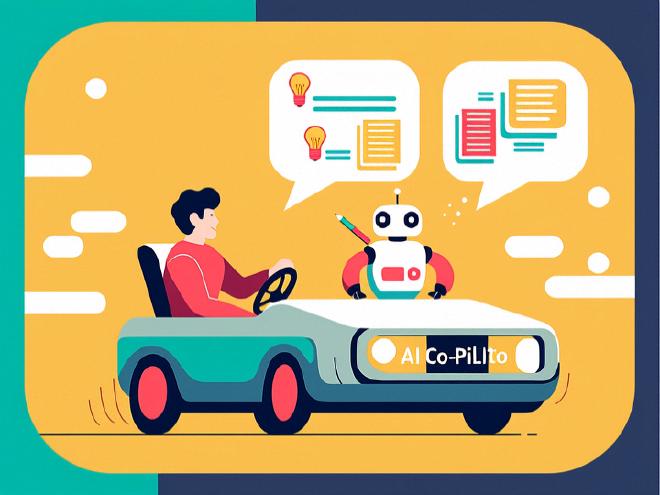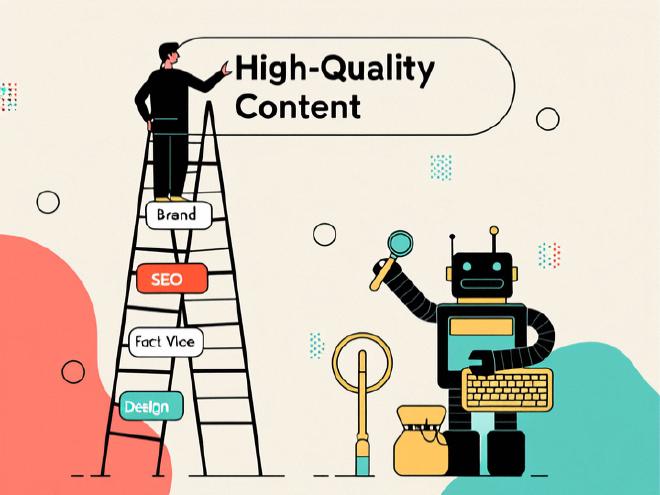- Change Log/
- Tips/
- How Marketers Can Leverage AI to Create High-Quality Content: From Tool Selection to Best Practices/
How Marketers Can Leverage AI to Create High-Quality Content: From Tool Selection to Best Practices
Table of Contents
How Marketers Can Leverage AI to Create High-Quality Content: From Tool Selection to Best Practices #
Introduction: AI Isn’t a “Content Robot”—It’s Your Creative Co-Pilot #

Imagine this: You’re brainstorming ideas for next week’s blog post, and suddenly an AI tool generates five compelling headlines in seconds. Or perhaps you’re preparing for a product launch and need 10 visually cohesive social media images—AI-powered design tools can whip up those visuals in just three minutes.
This isn’t science fiction—it’s the tangible reality that AI-driven content creation is already delivering.
But here’s the catch: Can AI truly produce high-quality content? Will it lead brands down a path of cookie-cutter uniformity? Are we trading creativity for efficiency while losing our brand’s unique voice along the way?
Don’t worry; this article will help you sort through the noise and get practical. We’ll skip the hype and dive straight into actionable strategies—from choosing the right tools and building efficient workflows to maintaining your brand’s distinct identity. By the end, you’ll know exactly how to harness AI to boost content productivity without sacrificing your brand’s soul.
Part 1: A Comprehensive Guide to AI Content Creation Tools: Choosing the Right Tool Makes All the Difference #
The world of AI content creation tools is vast, with each platform specializing in different areas. Picking the wrong tool not only wastes time but can also result in generic, AI-generated content that lacks personality. Below, we’ve curated a guide to the most popular AI content tools, complete with recommendations to help you find the perfect creative partner.
1.1 Text Generation Tools: Making Writing as Easy as Building with Blocks #
-
Jasper (formerly Conversion.ai)
Ideal for crafting blog posts, ad copy, email campaigns, and more. It supports multiple writing styles and tones. -
Copy.ai
Perfect for small businesses and startups looking for simplicity and a wide range of templates. -
Writesonic
Excels at generating SEO-friendly content, quickly producing well-structured long-form articles. -
ChatGPT / GPT-4 (with plugins or tailored prompts)
Offers unparalleled flexibility, making it ideal for scenarios requiring highly customized outputs.
Pro Tip: While AI-generated text often feels template-like, adding your brand’s keywords, real-world examples, or data can inject personality and authenticity.
1.2 Image and Design Tools: Visual Marketing Made Simple, Even Without Expertise #
-
Canva AI
Combines AI-powered text generation with intuitive image design, perfect for creating eye-catching social media visuals. -
DALL·E 2 / MidJourney
Great for brands needing creative, out-of-the-box visuals, such as product concept art or striking poster designs. -
Runway ML
A powerhouse for video editing and special effects, making it a go-to tool for video content creators.
Practical Advice: After generating images with AI, consider manually tweaking colors and layouts to ensure they align seamlessly with your brand’s visual identity.
1.3 Data and Content Analysis Tools: Empowering Data-Driven Content Strategies #
-
Frase.io
An SEO-focused content optimization tool that helps you craft articles optimized for search engines. -
MarketMuse
Better suited for larger teams focused on comprehensive content strategy planning. -
Clearscope
Specializes in competitive analysis and keyword coverage recommendations, ideal for SEO-driven content.
These tools don’t just help you write content—they also guide you toward decisions about what topics and formats will resonate most effectively with your audience.
Part 2: Best Practices for AI-Driven Content Creation: It’s Not About “One-Click Magic,” But Smart Collaboration #
Many people mistakenly believe that AI is simply a tool for “inputting commands and waiting for results.” In reality, producing high-quality content is an artful collaboration between humans and machines.
Here are some essential steps marketers must master to unlock the full potential of AI.
2.1 Define Content Type and Goals Clearly: AI Isn’t a Swiss Army Knife #
AI excels at handling repetitive, structured tasks like:
- Product descriptions (e.g., for e-commerce platforms)
- SEO blog drafts (quickly generating content frameworks)
- Social media captions (tailored to multiple platforms and tones)
- Email templates (personalized yet consistent across campaigns)
However, when it comes to brand storytelling, deep industry insights, or emotionally resonant copywriting, AI still falls short.
✅ Key Takeaway: Use AI for tasks that are repetitive and have low creative barriers, reserving human creativity for your brand’s core messaging.
2.2 Establish a Rigorous Content Review Process: AI Output ≠ Ready for Prime Time #

AI-generated content often comes with inherent challenges, including:
- Factual inaccuracies (e.g., incorrect company data or industry terminology)
- Inconsistent tone shifts within a single piece
- Logical gaps or abrupt transitions between sections
- Potential copyright issues (images or text may infringe on existing rights)
To mitigate these risks, follow these steps when implementing an AI content review process:
- Initial Human Review: Check for factual accuracy and logical coherence.
- Brand Voice Alignment: Ensure the tone matches your brand’s established voice.
- SEO and Grammar Checks: Use tools like Grammarly or Hemingway Editor to refine the final draft.
- Human Touch: Add your brand’s unique keywords, case studies, or emotional elements to make the content feel authentic.
💡 Quick Tip: Consider creating an “AI Content Checklist” to streamline the review process and ensure consistency across your team.
2.3 Maintain Brand Consistency: Even AI Can Learn to Speak “Your Language” #
AI doesn’t inherently understand your brand’s personality—but you can teach it to do so by:
- Including brand-specific copy samples during AI model training (some tools support this feature).
- Defining clear keyword templates (e.g., “professional, friendly, and warm”).
- Incorporating your brand style guide directly into your AI prompts.
- Regularly updating the AI with new keywords and tone preferences.
📌 Case Study: A health food brand used AI to generate product descriptions but always included a specific prompt phrase: “Written in a warm, mom-like tone—professional yet approachable.” This ensured the final output aligned perfectly with their brand voice.
Part 3: Real-World Success Stories: How AI Is Transforming Content Efficiency and Quality #
Case Study 1: A SaaS Company Accelerates Blog Production with AI #
Challenge: The company needed to produce 20 high-quality SEO-focused blog posts per month but was stretched thin due to limited resources.
Solution:
- Used Frase.io to analyze competitors’ content and identify optimal keywords.
- Employed Writesonic to generate initial drafts (structured, easy to edit).
- Had the content team conduct fact-checks and refine the tone to match the brand’s voice.
Results:
- Content production speed increased by 60%.
- SEO rankings improved by 15%.
- The team gained valuable time to focus on refining overall content strategy.
Case Study 2: A Fast-Moving Consumer Goods Brand Boosts Social Media Creativity #
Challenge: The brand was struggling with stagnant social media content ideas, leading to declining user engagement.
Solution:
- Leveraged Canva AI to generate multiple versions of visually engaging captions.
- Combined these AI-generated ideas with brand-specific keywords and insights into consumer behavior.
- Conducted A/B testing to determine which content variations performed best.
Results:
- Social media engagement soared by 25%.
- The time required to create fresh content was cut in half.
Part 4: Potential Risks of AI-Generated Content and How to Mitigate Them #
While AI-powered content creation holds immense promise, it also comes with certain risks that require careful management.
4.1 Content Homogenization: AI May Lack Originality #
Mitigation Strategy:
- Add a personal touch through human editing and branding elements.
- Incorporate real user stories, case studies, and anecdotes.
- Regularly update AI training data and prompt libraries to keep content fresh and unique.
4.2 Factual Errors and Brand Reputation Risks #
Mitigation Strategy:
- Implement a robust review process involving both AI and human oversight.
- Double-check critical information against reliable sources before publishing.
- Exercise caution when working with sensitive industries like healthcare or finance.
4.3 Legal and Copyright Concerns #
Mitigation Strategy:
- Choose AI tools that operate within legal and ethical boundaries.
- Conduct thorough copyright checks on all images, text, and other media used in AI-generated content.